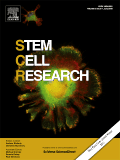
Stem Cell Research
Scope & Guideline
Fostering collaboration in stem cell research.
Introduction
Aims and Scopes
- Induced Pluripotent Stem Cells (iPSCs) Generation:
The core focus of the journal is the generation of iPSC lines from various sources, including patients with specific genetic disorders, healthy donors, and other model organisms. This includes the application of advanced techniques such as CRISPR/Cas9 for gene editing. - Disease Modeling:
The journal frequently publishes research on the use of iPSCs to model a wide array of diseases, including neurodegenerative disorders, cardiac conditions, metabolic diseases, and genetic syndromes, providing insights into disease mechanisms and potential treatments. - Therapeutic Applications:
Research articles often explore the therapeutic implications of iPSCs, including their differentiation into specific cell types for transplantation and their use in drug screening and development. - Ethnic and Genetic Diversity in Stem Cell Research:
The journal highlights the importance of genetic diversity by publishing studies that include iPSC lines derived from diverse ethnic backgrounds and genetic profiles, aiming to enhance the applicability of stem cell therapies across different populations. - Technological Innovations:
Innovations in stem cell technologies, such as non-integrative reprogramming methods, advanced gene editing techniques, and the development of novel reporter lines for tracking differentiation and function, are also emphasized.
Trending and Emerging
- CRISPR/Cas9 and Gene Editing:
The use of CRISPR/Cas9 technology for gene editing in iPSCs is a rapidly growing area, with numerous studies focusing on creating specific gene knockouts or corrections to model diseases more accurately and develop potential therapies. - Personalized Medicine and Patient-Derived iPSCs:
There is a significant increase in research dedicated to generating patient-specific iPSCs for personalized medicine applications, particularly for diseases like Alzheimer's, Parkinson's, and various genetic disorders. - Applications in Regenerative Medicine:
Research that explores the application of iPSCs in regenerative medicine, including tissue engineering and organoid development, is on the rise, highlighting the potential for using iPSCs in clinical therapies. - Mental Health and Neurological Disorders:
The journal has seen an increase in studies focusing on the use of iPSCs to model mental health disorders, such as schizophrenia and autism, reflecting a growing interest in understanding the neurological basis of these conditions. - Ethnic Diversity in Stem Cell Research:
Emerging themes include the generation of iPSC lines from diverse ethnic groups to address health disparities and improve the applicability of stem cell therapies across different populations.
Declining or Waning
- Adult Stem Cell Research:
There has been a notable decrease in publications focusing solely on adult stem cells compared to iPSCs. This shift indicates a greater emphasis on iPSCs due to their versatility and the ability to generate patient-specific cell lines. - Basic Stem Cell Biology:
Research centered around the fundamental biology of stem cells, such as stem cell niche interactions and basic pluripotency mechanisms, appears to be waning as the field moves toward more applied research in disease modeling and therapy. - Non-human Stem Cell Models:
There has been a decline in papers utilizing non-human stem cell models (e.g., mouse or primate models) in favor of human-derived iPSCs, reflecting a trend towards research that is more directly applicable to human health. - Stem Cell Banking and Ethics:
Discussions and publications related to stem cell banking practices and the ethical implications of stem cell research have become less prominent, possibly due to the increasing normalization of iPSC research and clinical applications.
Similar Journals
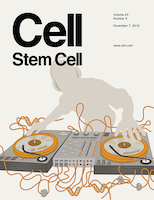
Cell Stem Cell
Unraveling the Mysteries of Stem Cells for a Healthier TomorrowCell Stem Cell, published by CELL PRESS, is a premier journal at the forefront of cellular biology, genetics, and molecular medicine. With an esteemed impact factor and recognized as a Q1 journal in multiple categories including Cell Biology, Genetics, and Molecular Medicine, it offers researchers, professionals, and students rigorous, peer-reviewed articles that shape the future of stem cell research and regenerative medicine. Located in Cambridge, MA, this journal has become an invaluable resource since its inception in 2007 and is committed to disseminating groundbreaking findings that drive innovation and understanding in these critical fields. By consistently ranking within the top percentile of its categories in Scopus, Cell Stem Cell remains an essential platform for scholarly communication, fostering collaboration among leading scientists worldwide. Although the journal does not currently offer open access options, its comprehensive insights are pivotal for anyone engaged in the study of stem cells and their applications.

Journal of Stem Cells & Regenerative Medicine
Unlocking the Potential of Stem CellsThe Journal of Stem Cells & Regenerative Medicine is a leading publication dedicated to the advancing field of stem cell research and regenerative medicine. Established in India and published by JOURNAL STEM CELLS & REGENERATIVE MEDICINE, this Open Access journal has been available since 2007, providing researchers and practitioners with free and unrestricted access to high-quality articles. With an ISSN of 0973-7154, the journal is indexed in Scopus, featuring a wide array of topics and insights into biochemistry, biotechnology, cell biology, and molecular biology, as denoted by its relevant quartile rankings. This journal is committed to bridging the gap between laboratory research and clinical applications, making significant contributions to the scientific community. The convergence of innovative studies from 2010 to 2024 positions it as an invaluable resource for those looking to stay at the forefront of stem cell and regenerative medicine research.

STEM CELLS AND DEVELOPMENT
Advancing the Frontiers of Stem Cell ResearchSTEM CELLS AND DEVELOPMENT, published by Mary Ann Liebert, Inc., is a leading peer-reviewed journal dedicated to the rapidly advancing fields of stem cell biology and developmental science. With an ISSN of 1547-3287 and an E-ISSN of 1557-8534, the journal encompasses a broad range of topics central to understanding stem cells' roles in development and regeneration processes. It holds a prestigious standing within its category quartiles, ranking Q3 in Cell Biology, Q2 in Developmental Biology, and Q2 in Hematology for 2023. With its convergence from 2004 to 2024, STEM CELLS AND DEVELOPMENT fosters an innovative platform for researchers, professionals, and students to disseminate groundbreaking research, share insights, and explore novel therapeutic approaches. Open access options enhance the journal's visibility and accessibility, promoting a collaborative exchange of information among the scientific community. Positioned at the forefront of stem cell research and its applications, this journal is vital for anyone seeking to stay informed about the latest advancements and trends within these critical areas of study.
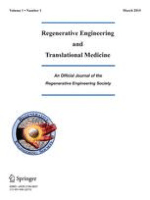
Regenerative Engineering and Translational Medicine
Connecting Academia and Industry for Medical BreakthroughsRegenerative Engineering and Translational Medicine is an esteemed academic journal published by Springer Heidelberg, focusing on the interdisciplinary fields of biomaterials, biomedical engineering, and cell biology. With an ISSN of 2364-4133 and an E-ISSN of 2364-4141, the journal has carved a niche for itself since its inception in 2015, showcasing cutting-edge research that bridges the gap between scientific findings and practical applications in regenerative medicine. As a recognized platform in its field, it is currently positioned within Q3 quartiles in biomaterials, biomedical engineering, and medicine (miscellaneous), with a Scopus ranking that reflects its growing influence among peers. The journal aims to disseminate high-quality, peer-reviewed articles that highlight advancements in regenerative engineering, further advancing both theoretical and applied research. Scholars and practitioners seeking to stay at the forefront of the ever-evolving landscape of regenerative health solutions will find invaluable insights and innovations within these pages. Join a community of leading thinkers and explore the journal's comprehensive research contributions, which are crucial for fostering partnerships between academia and industry in the quest for transformative medical solutions.

Cell Journal
Advancing the Frontiers of Cell ScienceCell Journal is a leading interdisciplinary publication in the fields of Cell Biology, Developmental Biology, Molecular Biology, and Reproductive Medicine, published by ROYAN INST since its inception as an open-access journal in 2007. With an ISSN of 2228-5806 for print and 2228-5814 for electronic editions, it provides a vital platform for researchers and professionals to disseminate innovative findings and insights that shape our understanding of cellular processes and reproductive sciences. The journal boasts an impressive Scopus ranking, achieving a Q3 position in both Molecular Biology and Reproductive Medicine, highlighting its significance in the academic community. Situated in Tehran, Iran, Cell Journal encourages global collaboration through its accessible content, making cutting-edge research available to a diverse audience. As it converges from 2011 to 2024, the journal continues to emphasize the importance of thorough scientific inquiry, fostering advancements that drive both theoretical frameworks and practical applications in cell science.

BMC Molecular and Cell Biology
Fostering collaboration in the realm of molecular and cell science.BMC Molecular and Cell Biology is a forward-thinking open-access journal published by BMC, specializing in the vital fields of molecular biology and cell biology. Since its inception in 2019, the journal has carved a niche for itself, ranking in the Q3 quartile in both Cell Biology and Molecular Biology categories as of 2023. With an ISSN of N/A and an E-ISSN of 2661-8850, the journal provides a platform for groundbreaking research, high-quality reviews, and innovative methodologies. Situated in the United Kingdom, BMC Molecular and Cell Biology promotes a diverse range of studies, addressing fundamental questions in biology that resonate with both experts and new researchers alike. The journal's commitment to open access ensures that valuable findings are readily available to the global scientific community, fostering collaboration and knowledge-sharing across disciplines. Researchers aiming to contribute to the field of cell and molecular biology will find this journal an indispensable resource for both publishing and staying informed on the latest advances.

IN VITRO CELLULAR & DEVELOPMENTAL BIOLOGY-ANIMAL
Elevating the Study of In Vitro DynamicsIN VITRO CELLULAR & DEVELOPMENTAL BIOLOGY-ANIMAL, published by SPRINGER, is a pivotal journal in the fields of cell biology and developmental biology, focusing on in vitro studies that enhance our understanding of animal cellular mechanisms and development. With an ISSN of 1071-2690 and an E-ISSN of 1543-706X, this esteemed journal offers a platform for researchers to present their findings and contribute to the body of knowledge necessary for advancements in biological sciences. As a recognized publication, it holds a 2023 category quartile of Q4 in Cell Biology and Developmental Biology, and Q3 in miscellaneous Medicine, reflecting its competitive position yet inviting critical submissions that can span multidisciplinary approaches. Though currently not open access, it serves as an essential resource for professionals, researchers, and students dedicated to unraveling the complexities of cellular processes in an ever-evolving field. The journal has been continuously published since 1986, signifying its long-standing commitment to fostering scientific discourse and innovation.

Genes & Diseases
Innovating solutions through genetic research and discovery.Genes & Diseases, published by KEAI PUBLISHING LTD, is a premier open-access journal dedicated to advancing the fields of genetics, biochemistry, and molecular biology. Established in 2014 and headquartered in Beijing, China, this journal has quickly risen to prominence, securing a place in the prestigious Q1 quartile in Biochemistry and Genetics (clinical), as well as Q2 in Cell Biology and Q1 in Molecular Biology as of 2023. With a commitment to disseminating cutting-edge research, Genes & Diseases serves as a critical platform for researchers, professionals, and students alike, ensuring that high-quality scientific work is openly accessible to the global community. The journal's exceptional impact is underscored by its selective Scopus rankings, which reflect its influence and relevance in key scientific domains, making it an essential resource for those exploring the intersections of genetics and disease pathology.
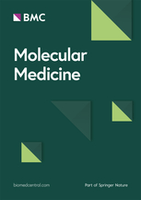
MOLECULAR MEDICINE
Shaping the Future of Medicine through Molecular InsightsMOLECULAR MEDICINE, published by SPRINGER, is a leading scholarly journal dedicated to advancing the fields of genetics and molecular biology with a focus on clinical applications. Since its inception in 1994, it has evolved to become a pivotal platform for disseminating innovative research findings, achieving a remarkable Q1 ranking in multiple categories, including Genetics, Molecular Biology, and Molecular Medicine as of 2023. Featuring an Open Access model since 2000, the journal ensures that cutting-edge research is freely available to the global scientific community, facilitating collaboration and knowledge exchange. With a commitment to high-quality peer-reviewed content, MOLECULAR MEDICINE serves as an essential resource for researchers, healthcare professionals, and students seeking to stay at the forefront of molecular research and its implications for medical science. For those interested in contributing to or accessing vital research in this dynamic field, MOLECULAR MEDICINE stands out as a premier choice.
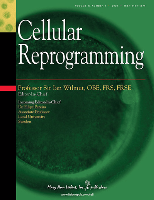
Cellular Reprogramming
Exploring New Frontiers in Stem Cell ResearchCellular Reprogramming is a prominent academic journal published by MARY ANN LIEBERT, INC, dedicated to advancing the field of cellular biology and biotechnology. With its ISSN 2152-4971 and E-ISSN 2152-4998, this journal provides an innovative platform for researchers and professionals to share groundbreaking research findings on cellular reprogramming, stem cell biology, and regenerative medicine. Established in 2010, and actively publishing until 2024, the journal is recognized for its contributions, evidenced by its categorizations in the Q3 and Q4 quartiles across several related fields, including biotechnology and developmental biology. This peer-reviewed journal not only supports open access to scientific literature but also aims to enhance interdisciplinary collaboration among scientists. With a growing impact in the realms of biochemistry, genetics, and molecular biology, Cellular Reprogramming remains an essential resource for the dissemination of pioneering research that could shape the future of cellular therapies.